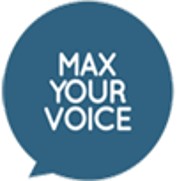- info@maxyourvoice.com
I’ve been speaking to people from Scandinavia about their perception of Mrs Thatcher, who became Baroness Thatcher, and her public profile. Most of them said that they found her voice was too high pitched when she first took office. It’s interesting that looking at footage of the time of her election in 1979, there are hardly any audio clips of her voice. Saatchi and Saatchi, who handled her, probably thought that this was not one of her strengths. Her diction was middle class – I’ve read that she asked for elocution lessons when she was 9 years old, but her overall vocal profile was stuck in the 1950’s perception of a pretty, perfect woman with a high pitched voice. Woman with lower pitched voices were considered ‘racy’. In 1950s speak this was a euphemism for prostitution. Audrey Hepburn, with her modulated voice and slight Belgium accent, did much to dispel this. This was the eighties. Mrs Thatcher received voice coaching. Several stories circulate about her voice coaching. When I was introduced to a lady at Westminster who’d worked in Mrs Thatcher’s office at the time, she told me that she’d shown a voice coach up to Mrs Thatcher’s office twice. (This is perhaps where the legendary ung – ka-ka exercise comes from). She said that the main coaching had been done by Bernard Millar, Mrs Thatcher’s speech writer and by actors who came to dinner at her house. Bernard Millar inspired Mrs Thatcher and increased her confidence in speaking in public. He said, “the need is to grip, entertain, persuade and, when necessary, move a body of people who receive and react to what they are hearing collectively.” His “The Lady’s not for Turning Speech” – click on the picture – is an example of this.

